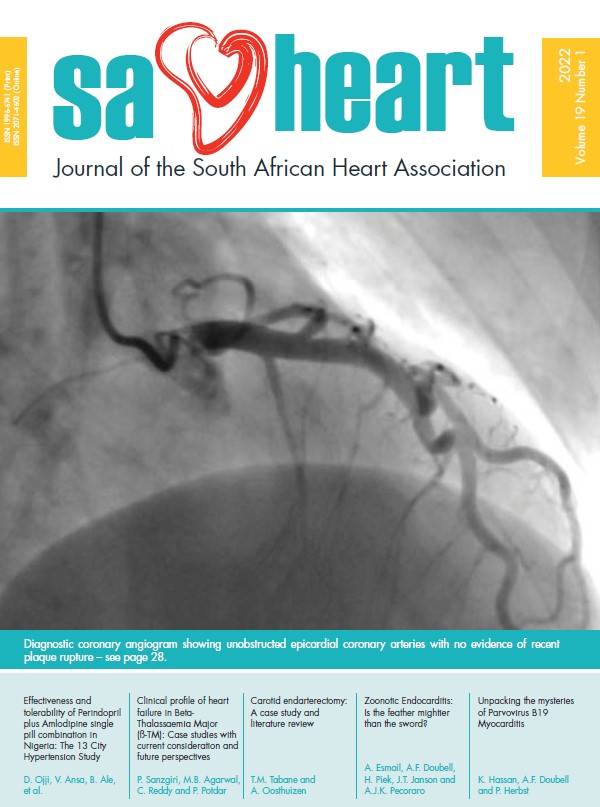The pathophysiology of RHD and outstanding gaps
DOI:
https://doi.org/10.24170/19-1-5362Abstract
Rheumatic heart disease (RHD) is the major cause of cardiovascular morbidity and mortality in children and young adults in low- and middle-income countries. Acute rheumatic fever (ARF) is characterised by multiorgan inflammatory symptoms initiated through cross reaction of immune responses (IRs) to group A streptococcus (GAS) proteins to host proteins. Recurrence of these IRs targeting the heart valves may lead to permanent damage, a sequela which is termed RHD. Preliminary studies suggested genetic associations in RF reactions, but that other host factors are also involved, leaving the determinants of RHD progression incompletely understood. Previous clinical and recent epidemiological studies support differential clinical phenotypes, with varying history from different settings. This review summarises the protein-centric biomolecular changes in RHD and highlights outstanding molecular gaps where urgent focus is required to improve our understanding RHD pathophysiology. Numerous studies have confirmed alterations in the expression of structural and immune response proteins, but the modifications giving rise to neo-epitopes and their involvement in RHD have not been established. As RHD is associated with poor living conditions, identification of other factors driving inflammation to enhance RHD progression is necessary to advance our knowledge and improve patient management. Furthermore, biomarkers for early identification, disease stratification, and alternative therapeutic strategies are necessary to improve treatment and prevention strategies in order to reduce the burden of RHD.
Relevance: Despite the explosion of scientific innovation over the last few decades, fundamental scientific studies to understand the pathophysiological mechanisms of RHD remain in their infancy and the determinants of RHD progression thus remain uncertain. Moreover, inconsistency in natural history and phenotypic presentations are seen between Africans and other cohorts in which preliminary studies were conducted, implying that differences in genetic complexity and environmental factors may be responsible for the differential disease progression rates.
SAHeart 2022;19:38-48
Downloads
Downloads
Published
How to Cite
Issue
Section
License
This journal is an open access journal, and the authors and journal should be properly acknowledged, when works are cited.
Authors may use the publishers version for teaching purposes, in books, theses, dissertations, conferences and conference papers.
A copy of the authors’ publishers version may also be hosted on the following websites:
- Non-commercial personal homepage or blog.
- Institutional webpage.
- Authors Institutional Repository.
The following notice should accompany such a posting on the website: “This is an electronic version of an article published in SAHJ, Volume XXX, number XXX, pages XXX–XXX”, DOI. Authors should also supply a hyperlink to the original paper or indicate where the original paper (http://www.journals.ac.za/index.php/SAHJ) may be found.
Authors publishers version, affiliated with the Stellenbosch University will be automatically deposited in the University’s’ Institutional Repository SUNScholar.
Articles as a whole, may not be re-published with another journal.
Copyright Holder: SA Heart Journal
The following license applies:
Attribution CC BY-NC-ND 4.0

